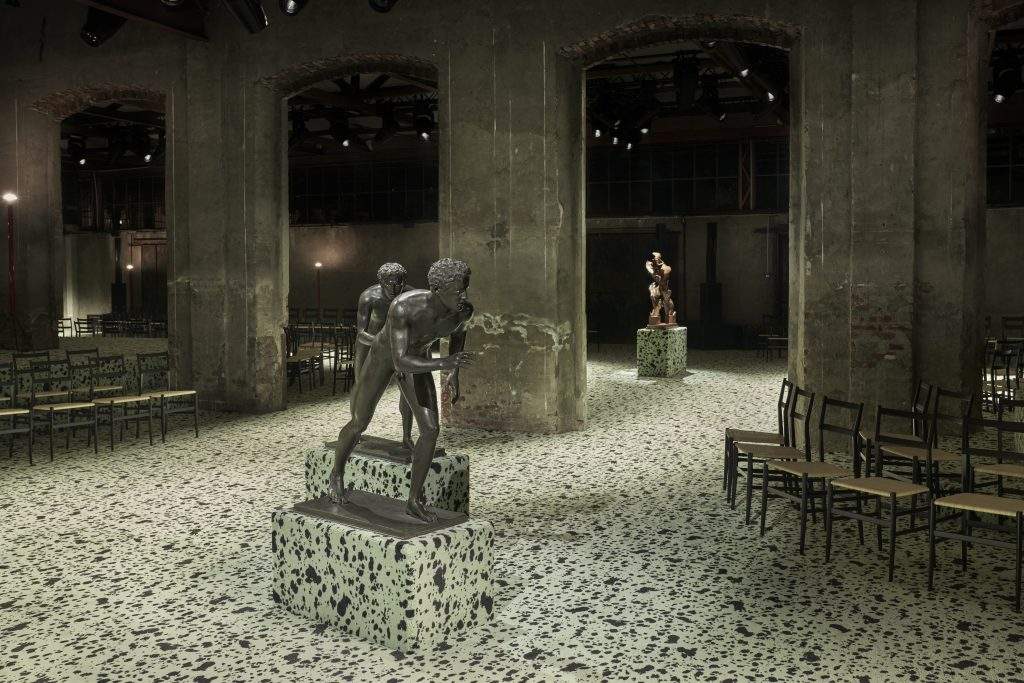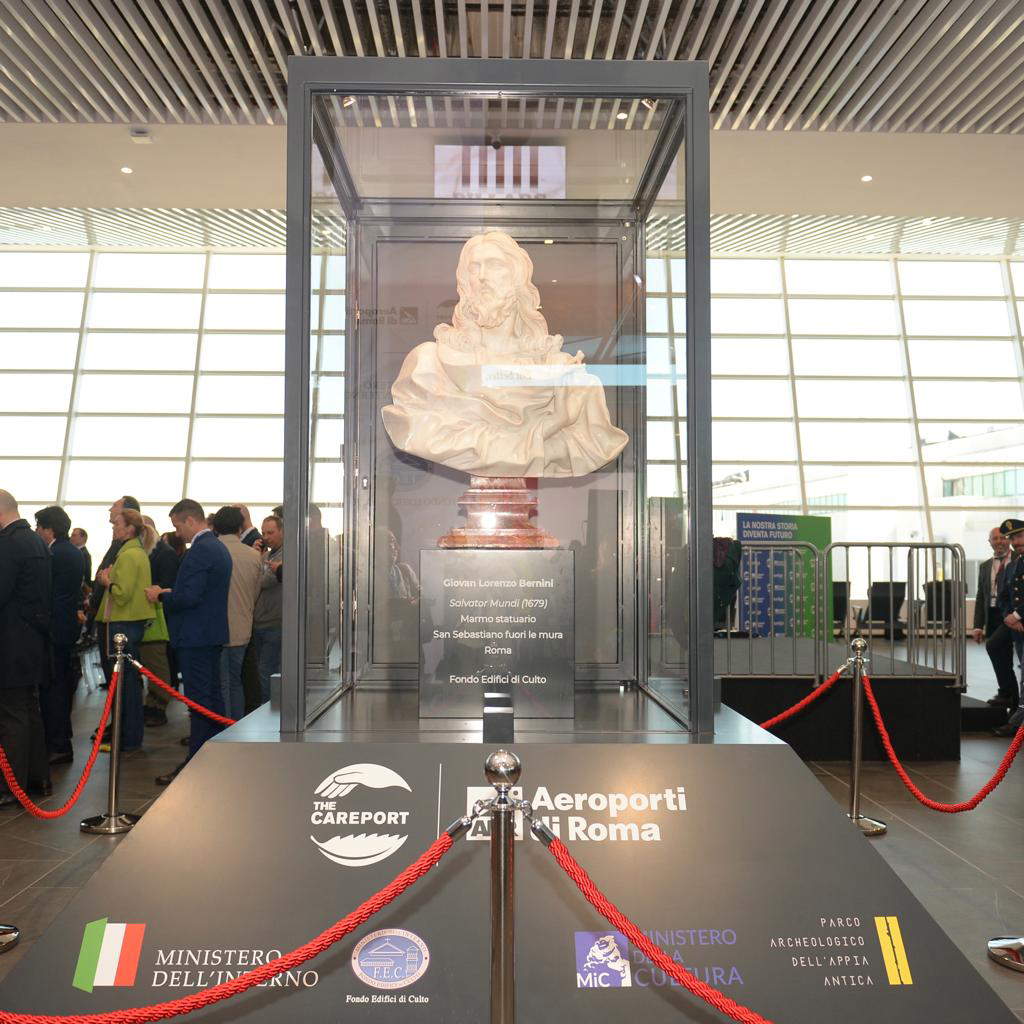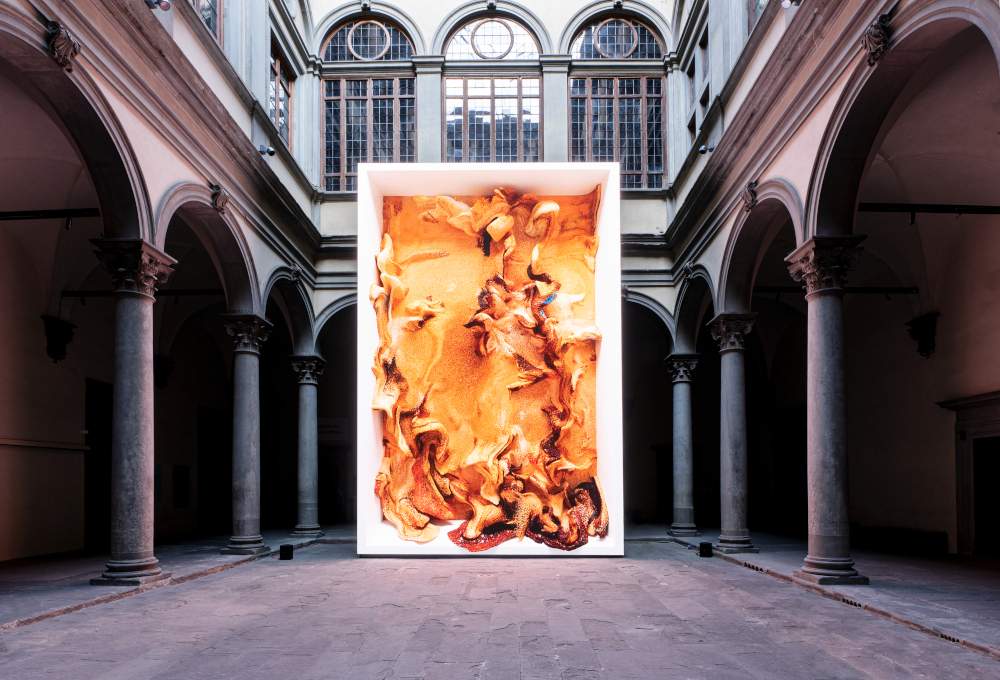Reproductions of artworks at exhibitions? Nothing new: the issue is awareness
News of the Herculaneum Runners arranged to be wallpapered at a fashion show, Caravaggio’s Bacchus displayed at a wine exhibition market, or Bernini’s Salvator mundi placed at an airport boarding gate, dictates, from time to time, an immediate check of the calendar to make sure it is not an April Fool’s joke. Verified that it is not, an old school memory immediately comes to mind: the dinner of Trimalchio narrated in the pages of Petronius’ Satyricon . As every high school student should know, it is the account of a copious banquet given a couple of millennia ago, in the Rome of Emperor Nero, by a freedman who had become enormously wealthy, which the Latin writer was able to transfigure into an immortal emblem of bad taste. In fact, the bizarre decorations of the opulent mansion, the tawdry display of the household staff, the succession of miraculous courses, and the crude and excessive manners of the host result in a gross display of luxury for its own sake, devoid of any elegance or refinement. So for the indiscreet displays of the bronzes from Herculaneum, by Caravaggio and Bernini, well before questions of conservation, one’s thoughts turn to Satyricon: certain exaltations of kitsch, in fact, would have no fortune, and no way of existing, if there were no novel Trimalcioni.
Moreover, the Latin world does not take us off topic, since the phenomenon of reproductions of works of art, as is well known, was as widespread as ever in imperial Rome, through replicas from original Greek sculptures, often of the highest quality and of considerable commercial value. One example for all: the FarneseHercules in the National Archaeological Museum in Naples is a marble reproduction, signed by the Athenian Glycone, of a lost bronze by Lysippus, of which further ancient replicas are known. In turn, the FarneseHercules , found at the Baths of Caracalla around 1546, enjoyed immediate fame, which has continued to the present day, also giving rise over the centuries to endless reproductions, in the most heterogeneous materials and the most diverse sizes. This is enough to remind us trivially of how serial repetition is profoundly, and always has been, connected with the success of an artistic product: it is usual for a masterpiece to be replicated, and among its copies there may in turn be masterpieces, think of Baccio Bandinelli’s Laocoon group in the Uffizi.
However, with the age of technical reproducibility, as Walter Benjamin has taught, the work of art has lost its “aura,” and so have authorial replicas, replaced by reproductions that are extremely faithful, but very often lacking in heart and character. It is in the obvious aim of recovering the “aura” of the work of art, that in very recent times technology has been able to elaborate the tool of NFTs, with outstanding results for the real and especially the digital market. Palazzo Strozzi should be credited with having proposed to a more traditional audience, and one far less familiar with such outcomes, the exhibition Let’s digital (2022), dedicated to NFTs and the new and surprising realities of digital art, while the Uffizi had recently put the Tondo Doni on sale in NFT version, confirming that the phenomenon of reproducing ancient works of art finds a significant space even in the field of cryptoart.



In truth, technology does not make anything so new available, if one considers that around the early twentieth century, it was not uncommon for exhibitions of ancient art to present diligent academic casts of immovable sculptures or photographs of comparative works in order to foster public understanding and connoisseur reflections. More than the degree of accuracy of the reproduction, therefore, the issue is about the “aura,” and consequently the level of awareness of the viewer and those who decide to display an original or replica in a particular context.
The public that flocks to the Louvre in front of Leonardo’s Mona Lisa , or in St. Peter’s in front of Michelangelo’s Pieta , to capture its images perhaps in a selfie, is seduced exclusively by the “aura” of those masterpieces. The distance and protections, in fact, make careful and measured contemplation impossible, and if viewers unknowingly gazed at very faithful replicas instead of the originals, their experience as devotees of the sacredness of the “aura” would obviously not suffer any trauma.
In an intelligent exhibition, on the other hand, the originals should be allowed to be examined in their formal and material aspects with care, and, beyond the “aura,” the replicas may well be there, especially for their didactic function: a well-made cast of a marble that is impossible to transport can be useful for comparison, just as a photograph can evoke a lost masterpiece, aid the reconstruction of a dismembered ensemble, or replace a drawing that has returned home for conservation reasons. However, the responsibility for selection rests with the curator. It is he who from time to time must evaluate with judgment and balance, so that the reproduction is always recognizable and does not win more attention than an original, risking misunderstanding visitors and overshadowing the real protagonists. In this sense, the highly timely replicas offered by modern-day technology can be more dangerous than convenient. And the best guide, to avoid Trimalchio’s embarrassing gaffes, must always be good taste, based in our case on true and passionate knowledge of heritage and its cultural value.
That good taste that definitely failed in the decision to bring Caravaggio to the fair and Bernini to the check-in, with the sole purpose of exhibiting their “aura” for purposes of vain and futile ostentation, and that tends to end up daily strangled by the business connected with the contemporary myths of communication, marketing and cultural enterprises. Evidently Oscar Wilde was too optimistic when he announced a future in which power would be in the hands of the most refined (“it is the exquisites who are going to rule”; A Woman of No Importance, 1893). In fact, he was indeed a bad prophet.
This contribution was originally published in No. 18 of our print magazine Finestre Sull’Arte on paper. Click here to subscribe.
Warning: the translation into English of the original Italian article was created using automatic tools. We undertake to review all articles, but we do not guarantee the total absence of inaccuracies in the translation due to the program. You can find the original by clicking on the ITA button. If you find any mistake,please contact us.




























